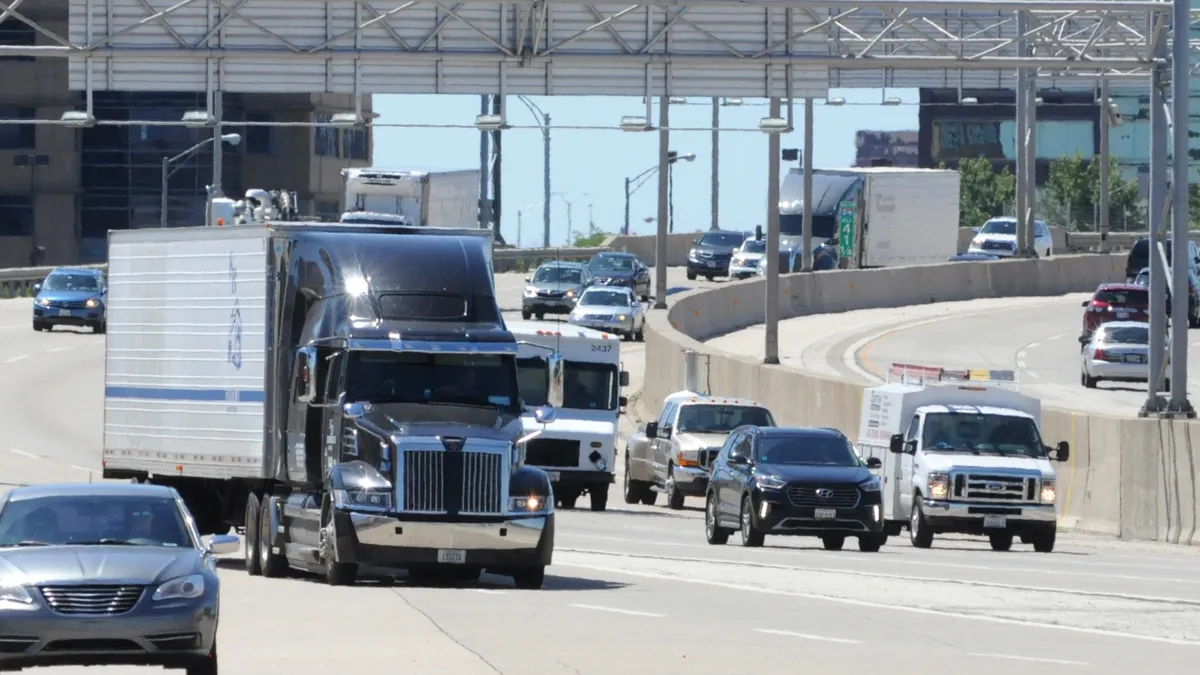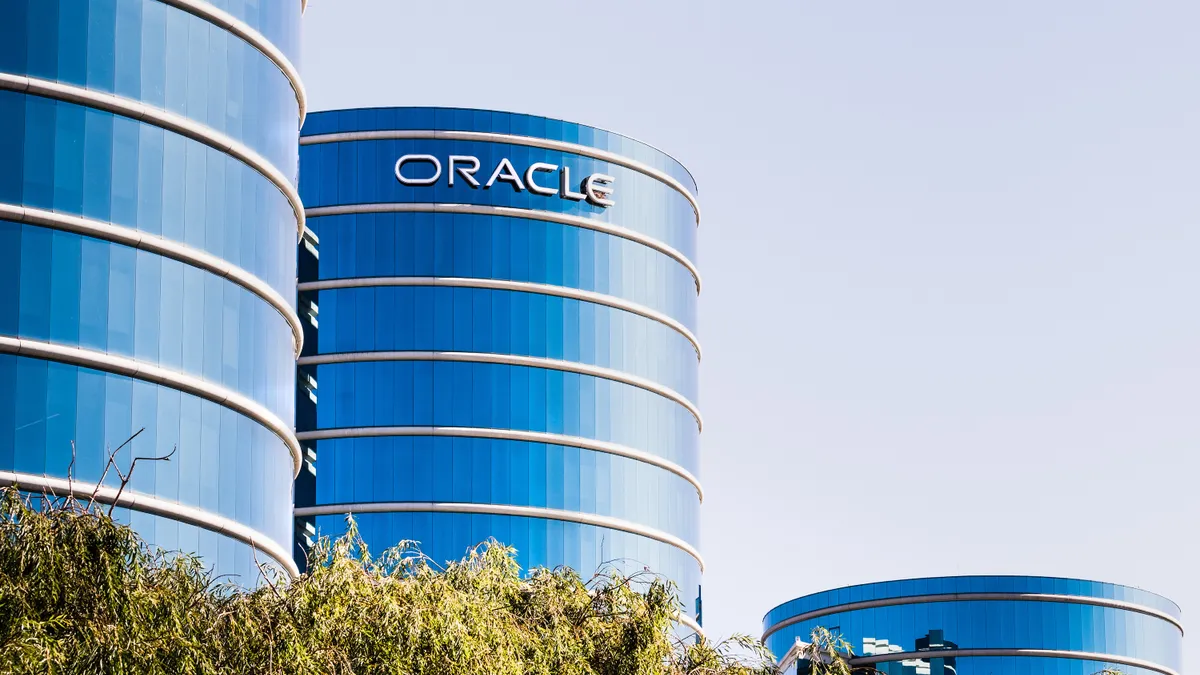Just thinking about the term "commuting" might be enough to conjure images of sitting in traffic, in a motor vehicle, by oneself. Statistics suggest that picture isn't far from reality for most.
U.S. workers age 16 and over spend an average of 27.1 minutes per day traveling to work, according to 2018 data from the U.S. Census Bureau, and that's a figure that has increased since 2010, when it stood at 25.3 minutes per day. For about 76% of workers, that time is spent by themselves in a car, truck or van.
Driving alone, as it turns out, is one way to frame the conversation around commuting. When talking about the issue of commutes in an interview with HR Dive, Jason Pavluchuk, policy director at the non-profit advocacy group Coalition for Smarter Transportation, referred to the metric of "drive-alone rates" when discussing how to convince employers to invest in transportation benefits.
"It's developing a story that convinces more employers why reducing their drive-alone rates makes sense," Pavluchuk said, noting the potential for gains in productivity, recruiting and other areas to be had from providing commuting benefits to workers.
Workers do appear to be sensitive about commuting times. More than one-third of hourly job seekers using on-demand staffing platform BlueCrew rejected job offers because of a long commute, outpacing rejections for other reasons, including inflexible work schedules and pay. In 2017, CEB (now Gartner) found in a survey of 7,500 employees that a stressful commute was the second-most impactful factor in determining employee engagement.
And yet, commuting benefits have yet to catch on in a big way at U.S. employers. Just 14% offer a transit subsidy, according to the Society for Human Resource Management's 2019 Employee Benefits Survey, while 12% offer qualified transportation spending accounts.
Sources who spoke with HR Dive explained that multiple factors on both the employee and employer side of the equation affect the adoption of commuting benefits.
Obstacles in the road
Location is one such consideration, Julie Stich, vice president of content at the International Foundation of Employee Benefit Plans (IFEBP), told HR Dive in an interview. Offices in large urban areas may not offer much in the way of free parking, making public transportation the logical next step.
But customer experiences can get in the way of adoption, Stich said. In a 2017 commuter benefits survey by IFEBP, fewer than half of employees surveyed selected rapid transit or bus as among their top three modes of commuting, while more than 90% included driving. IFEBP found workers overwhelmingly preferred their cars over other forms of transit, Stich said, especially due to their convenience.
Anecdotes collected in the IFEBP survey included one from an employee in Texas who cited complex connections in local public transit systems that took a long time to get to, while others complained of maintenance and delays. In Missouri, one company said it would need to re-evaluate its decision to pay for employees' garage parking.
Even when a company has decided to keep its transit benefits, transit agencies may not always communicate workers' options effectively, Pavluchuk said. "A lot of these agencies have options available, they're just not being communicated well with employees," he said. "Many do it better than others, but the reality is that agencies need to make things run on time."
On top of this, it's difficult for companies to understand all of the options available to every given employee, Matt Caywood, CEO of TransitScreen, told HR Dive in an interview. "It's hard for them to know how much they could gain by rolling out benefits," Caywood said. "Very few people are experts on all their local commutes."
Changes to tax exemptions
Adding to the above is the fact that recent decisions at the federal level impact whether such benefits are financially worth it for employers. The 2017 Tax Cuts and Jobs Act, signed into law by President Donald Trump, eliminated subsidies for providing "qualified transportation fringe" benefits to workers. Those eliminations include parking on an employer's property, according to Stich. "Employers now need to calculate the value of that parking and pay tax," she said.
"The tax reform bill changed the way employers look at transportation costs," said Pavlachuk, who believes the changes are a "disincentive" to offering the benefits. And while both parking and transit pass benefits are taxable, that doesn't necessarily make them equal in the eyes of employees and employers. "In many locations nationwide, the cost of transit is higher than the cost of any parking that is available," Pavlachuk said.
Employers also need to consider local laws. In both New York City and Washington, D.C., most employers with 20 or more employees are required to offer commuter transit benefits, and in Berkley, California, employers with 10 or more employees are required to offer a commuter benefit program. Such laws are spreading, Caywood noted, with Seattle's ordinance due to take effect Jan. 1.
Giving the green light
Employers will need to think about the needs and knowledge of workers in looking to expand utilization of their commuter benefits, per Caywood. "A lot of people really struggle with which benefits to purchase," he said. "They might be riding transit everyday, but they don't necessarily know which benefits to add."
Part of doing this is simply listening. "You know certain employees are coming to you," Stich said; "Keep a record of that." She added that employers might want to do a survey of employees where they float transit alongside other types of new offerings to gauge interest. "See if they respond to that."
Once they've made those offerings visible, it might not actually be that difficult to persuade workers that commuting benefits make sense, Pavlachuk said. "These options sell themselves in a lot of ways." Things like incentive programs and recognition for employees who reduce their drive-alone rates might also help matters.
Remote work is also an option. More employers are opening up to options like telecommuting, Stich said, and the benefit can be particularly useful at times when employees would otherwise have to deal with increased traffic due to weather, local events or other reasons.
Still, not all businesses operate in areas that would be fit for remote work. Though it's "growing in leaps in bounds," Pavlachuk said, some employers are trying to find more than anecdotal evidence that it will fit their cultures.
Case study: 'Vanpooling'
Even in areas without robust transit systems, employees don't necessarily need to commute alone. In addition to carpooling, workers and their employers might consider vanpooling. That's the model behind Commute with Enterprise, a service operated by Enterprise Rent-A-Car that allows groups to operate a commuter van or similar vehicle, often to the same worksite.
The programs are available in cities across the U.S., Mike Mangan, vice president of Commute with Enterprise, told HR Dive in an interview, but they tend to attract workers with longer commutes living in places traditional public transit doesn't service. Employers can offer vanpooling as an employee benefit, but Enterprise has also teamed with state transit agencies to provide subsidies to users. It announced an expansion of one such program in New Mexico last month.
Enterprise's program doesn't have paid drivers — vanpool members typically select a vanpool coordinator and have multiple drivers within the group. "They're like family," Mangan said.
Mangan acknowledges it's difficult to get people over the fear of being away from their own car, despite the annual expense involved in maintaining the typical motor vehicle. But he also said there's some truth to observations that younger generations think about transportation differently, given the popularity of apps like Uber and Airbnb.
"I do believe commuting benefits are evolving," Mangan said. "I think there's definitely attributes that will continue to support these types of things in the future."
That shift in mindset could prove advantageous for companies that have invested in the benefits as a way to attract talent. IFEBP found in its research that environmental concerns ranked low on the list of reasons for why companies offer commuting benefits, Stich said, but also that younger workers in particular are thinking about it.






















